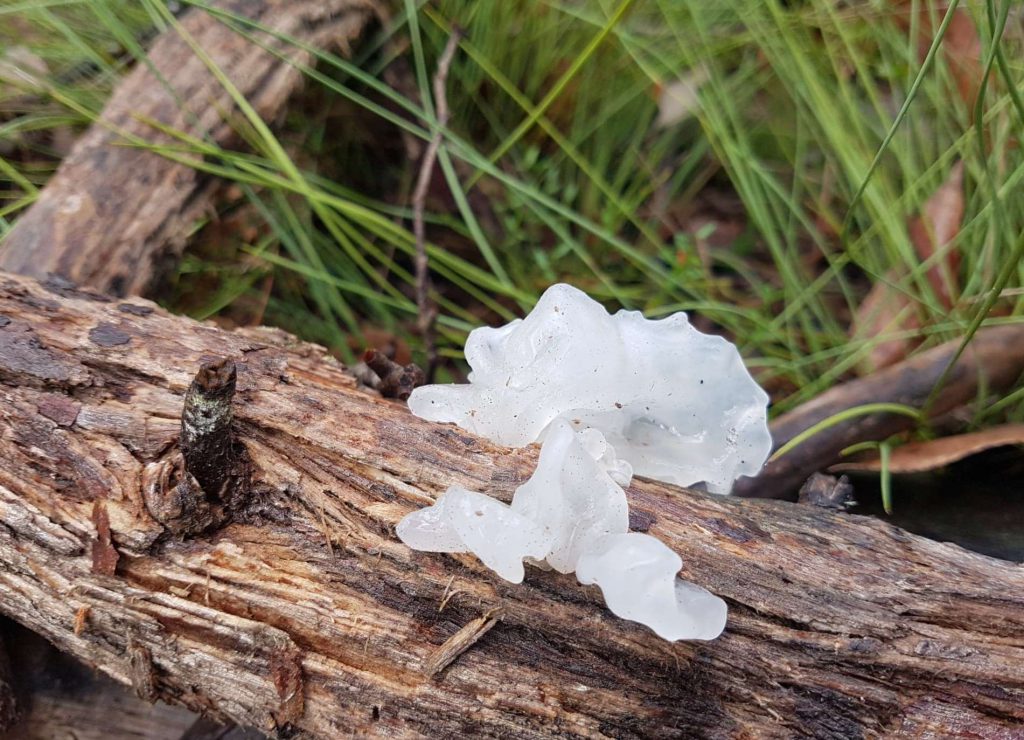More fascinating fungi in our region: White Jelly Fungus, plus hear more about the Octopus Stinkhorn!
As you will have noticed if you’ve been outdoors in the past couple of months, it’s fungi season!
For most of the year, we barely cast a thought toward fungi, but when the cooler and wetter weather triggers many species to start fruiting (producing mushrooms) we begin to take notice again. It’s not surprising that we only think about and notice fungi when they are fruiting, as the main part of the organism, the mycelium, is out of sight within the wood, earth, or dung that the organism is feeding upon.
The mycelium is made up of individual thread-like strands called hyphae which release digestive enzymes to break down the living or dead material in which the fungi is growing – this is how fungi “eat”. In fact, this is one of the main differences between plants and fungi (that fungi do not carry out photosynthesis); another key difference is that while plant cells are made from cellulose, fungi cells are made from chitin – the same material which makes up insect and crustacean exoskeleton!
One interesting species I have found in a couple of locations recently is White Jelly Fungus or Snow Fungus (Tremella fuciformis). Like the Cordyceps mentioned in my previous post, this species is also parasitic; however, the White Jelly Fungus parasitises another fungus! This species is widely consumed in Chinese cuisine, traditionally in dessert soups eaten at special occasions. It is also said to have medicinal properties and is used in anti-aging products. I’m not sure about these claims, but it is another interesting sight to see out in the bush!
My recent post about the Octopus Stinkhorn caught the eye of Jeremy Lee of ABC South West Victoria, and I had a chat to him on air about this species and some other fascinating fungi in our area on 11 July. If you missed it, click play below to listen to the audio recording:

